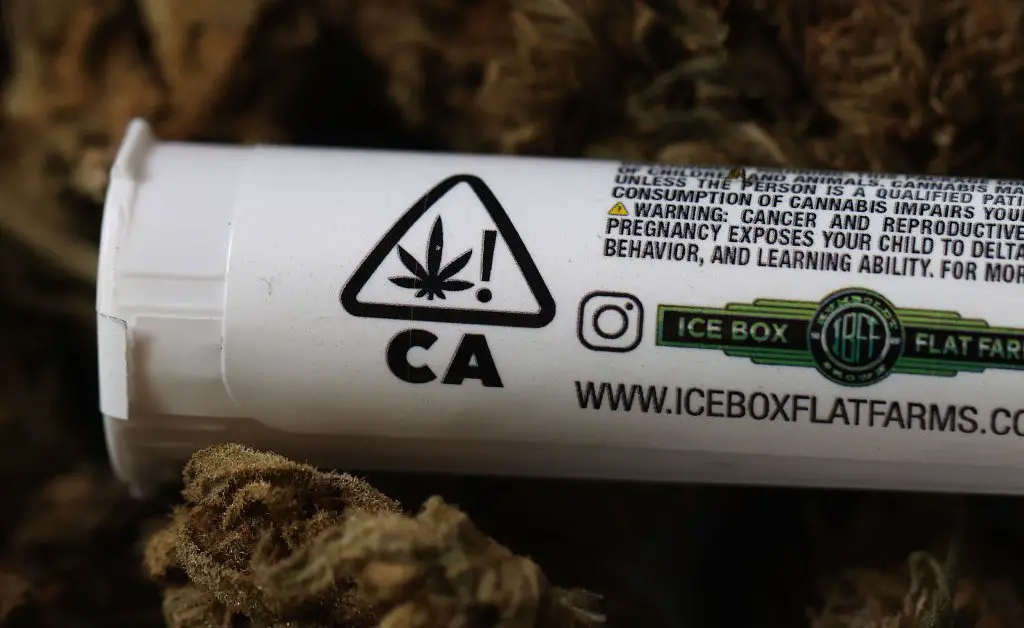
In a dramatic example of government yielding to public opinion the Senate has introduced legislation to legalize cannabis on the federal level. Though passage before the November election is unlikely, this long overdue legislative action seeks to update a statute stemming [pun intended] from marijuana’s demonized image as depicted in the 1936 documentary film “Reefer Madness” and better reflect public opinion and liberal social trends. Currently, under the Federal Controlled Substances Act (CSA) of 1970, cannabis is considered to have “no accepted medical use” and a high potential for abuse and physical or psychological dependence. This Federal statute contrasts with the claims of therapeutic benefits of cannabis’ biochemical constituents such as cannabidiol and THC (tetra-hydro-cannabinol) when the sole FDA indication for their use is a rare childhood (Lennox-Gasteau) seizure disorder.
While the scientific information to officially endorse cannabis products as having therapeutic benefits is lacking, a recent Pew Research Center Survey found that 88 percent of Americans felt that marijuana should be legal for medical or recreational use. This wave of popular opinion has led to marijuana’s approval in 38 states for medical use, in 24 states for recreational use and decriminalization in an additional seven states.
Who could have anticipated that in less than two decades, a naturally grown recreational intoxicant, cannabis sativa, would go from demonization (as) to mainstream, and begat a tsunami of popular demand for legalization and a gold-rush of commercialization fueled by $61 billion of investment. Some may see this as an impressive demonstration of social progress, while others consider it the result of reckless and ill-conceived policies that have created a tangled matrix of laws and conflicting incentives based on confused logic and incomplete knowledge.
Americans now have access to a recreational intoxicant that is arguably no more dangerous than alcohol or tobacco without fear of the disproportionately severe punishments previously meted out to those apprehended for possession and use. But at the same time, there are numerous inconsistencies and cross-purposes integral to the legalization and commercialization of cannabis products. The most obvious of these is the fact that Federal law considers the use, sale, and possession of cannabis illegal.
Read More: What Marijuana Reclassification Means for the United States
The consequence of the latter was not just that the exaggerated therapeutic claims were not born out by scientific research, but that it served as a “Trojan Horse” to galvanize public opinion and advance cannabis advocates ultimate goal of unfettered access. This came to fruition when the state legislatures of Colorado and Washington voted to legalize the commercial production and sale of cannabis products in 2012. This triggered a stunning demonstration of states’ rights in which a majority of states followed suit by liberalizing their cannabis laws despite Federal prohibitions.
The legislative conflict between Federal and state laws is not ideal, but not a grievous problem in large part because the conflict is tolerated and not enforced. More onerous is the conflict between legislative reform and public health that has emerged. By acceding to public opinion and false claims of salutary effects, state governments are exposing their constituents to health hazards. Compounding this misguided policy is the fact that state governments are incentivized by the prospect of increased tax revenues.
In a glaring recent example of governmental missteps, on March 17, Gov. Kathy Hochul declared New York State’s commercialized cannabis licensing and distribution system “a disaster” and announced “a top-to-bottom review of the NYS Cannabis Control Board and its system for regulating legalized cannabis products.” The main purpose of the review was to process applications faster and enable more cannabis vendors to open. Just weeks before Hochul’s executive order which was intended to give New Yorkers greater access to cannabis, the American Heart Association had issued a warning on the higher risks of cardiovascular events associated with heavy cannabis use. This was based on a National Institutes of Health (NIH)-funded study of nearly 435,000 American adults reported last November which found that “Daily use of cannabis –– was associated with a 25% increased likelihood of heart attack and a 42% increased likelihood of stroke when compared to non-use of the drug.”
Prior to that, the NIH issued the following warning: “Regular recreational marijuana users had psychotic disorders at a greater rate than any other recreational drug. More than cocaine, methamphetamine, amphetamine, LSD, PCP, or alcohol. The risk of negative mental health effects is increased about five times by regular use of high potency marijuana.” High potency refers to the fact that the commercialized pot sold legally today is not the same naturally grown weed smoked by constituents of the counterculture.
Such health hazards are not some abstract possibility or unconfirmed scientific speculation, but a growing current reality. As a practicing psychiatrist I have witnessed these effects first-hand as a burgeoning number of cannabis-induced medical and mental disturbances—particularly in young people—show up in our hospital emergency rooms and are referred to me for consultation. And while the rising numbers of adverse effects occurring in the wake of legislative reform are disturbing, they are not surprising. Rather, they were anticipated.
At the start of the movement to liberalize access to cannabis in 2014, Roger Dupont, the founding director of the National Institute of Drug Abuse, and I published an article in the medical journal Science that predicted such adverse effects.“The debates over legalization, decriminalization, and medical uses of marijuana in the United States are missing an essential piece of information: scientific evidence about the effects of marijuana on the adolescent brain,” we wrote. “Much is known about the effects of recreational drugs on the mature adult brain, but there has been no serious investigation of the risks of marijuana use in younger users.”
Part of the argument for legalizing cannabis was that it was no more dangerous than other legal recreational intoxicants like alcohol and tobacco. However, as Kevin Sabet, National Drug Control Policy Advisor in the Bush and Obama administrations pointed out in his book SmokeScreen: What the marijuana industry doesn’t want you to know, legislators didn’t reckon on the possibility that commercialization of cannabis would lead to inconceivably high potencies (with THC concentrations in some products approaching levels up to 99.9% as compared to less than 10% in naturally grown pot sold on the black market).
This was revealed in an NBC News report on states enacting legislation to legalize cannabis in April 2022: “We were not aware when we were voting [in 2012] that we were voting on anything but the plant,” said Dr. Beatriz Carlini, a research scientist at the University of Washington’s Addictions, Drug & Alcohol Institute. She has led the effort in Washington state to research high-potency pot and is now exploring policy options to limit access. Her team concluded in 2020 that “high-potency cannabis can have lifelong mental health consequences.”
So while possible therapeutic value has been the lever, tax revenue for states and profits for new industries—resulting from broad access—has clearly become the goal with unsuspecting users as the potential victims. This is the template now driving rapid legalization of a host of previously prohibited recreational drugs including MDMA (ecstasy) and psychedelics.
There are reasons to believe in, and support, the therapeutic potential and safe recreational use of cannabis. However, it is imperative that accurate knowledge derived from research carried out with scientific rigor, objectivity, and dispassion inform legislation and policy that will affect the lives of millions of Americans and particularly youth. Until we have this knowledge, we must be prepared to temper the irrational exuberance of advocates for unrestricted recreational use and restrain the commercial interests from expanding the user base and potency of cannabis products. The responsibility for this resides with government. Governors and legislators must hold the line and not succumb to the pressure of public opinion and temptation of additional tax revenues.





